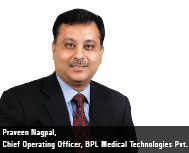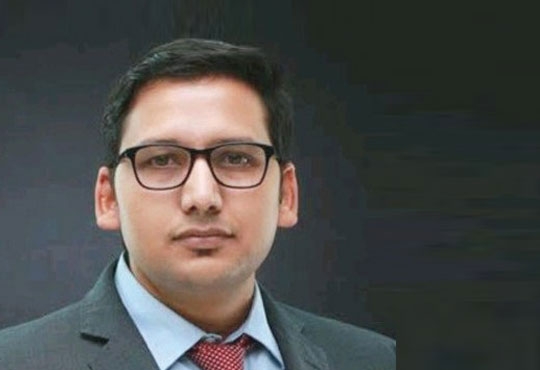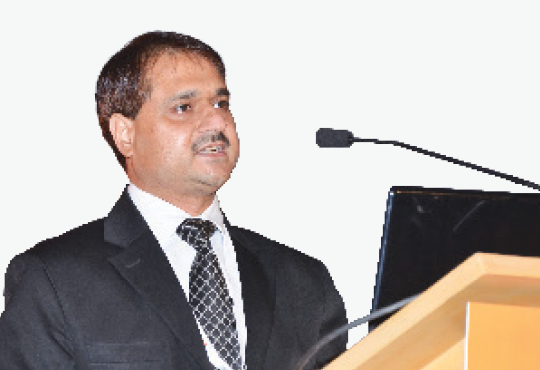
CIOTechOutlook >> Magazine >> November - 2015 issue
Digital technology: Bridging the gap between Rural and Urban India
By
 BPL Medical Technologies, headquartered in Bangalore, is a provider of solutions for design & development and manufacturing of Non Invasive Diagnostic Medical Equipment. The company provides solutions for Super GP Clinics, Primary Health Centers, POC and Emergency Medical Systems.
BPL Medical Technologies, headquartered in Bangalore, is a provider of solutions for design & development and manufacturing of Non Invasive Diagnostic Medical Equipment. The company provides solutions for Super GP Clinics, Primary Health Centers, POC and Emergency Medical Systems.A healthy life is a prerogative of every living soul on this planet. To attain this, increased investments is being sought from both private and public healthcare sectors.
At the same time, the key challenge, presently, is to have the right technology which provides early and accessible healthcare solutions. This has opened up opportunities for many healthcare solution providers to find innovative new technologies to make available faster and accurate medical aid. Medical organizations are on a spree to identify the right areas, be it on mobile devices or IT services. This noble cause is creating vast employment opportunities.
There are tremendous opportunities emerging through new technologies. Digital technology is bridging the gap between the rural and urban society. And the best examples are seen in some of the developing nations like India. Telemedicine creates opportunity for many key procedures and expert opinions, sometimes even thousands of kilometers awayfrom the facilities. Before a patient walks in or is brought to a hospital, the digital healthcare technology can provide all the vital parameters to take the right medical decisions for the patient. This has been already started by most of the big and small healthcare providers and is transforming the way healthcare is being delivered. The technology to retrieve the health profile of every citizen enables even more preventive and curative medical attention. IT is transforming the healthcare sector and creating a common database to deal with the medical emergencies more effectively. Big Data can lead us to some big decisions and help government of any country of its healthcare policies linked with its population health.
New devices in all fields are helping the patients to get Quality healthcare. Technology is helping in accurately predetermining and thereby providing personalized healthcare. The efforts through these changes are not just meant to have long life but quality life. Some of these technological advancements are simple and have started bearing fruit in developing countries. To keep the cost of healthcare low, some of these developments are being adopted in even developed countries. So, healthcare’s probability of reaching every corner of the world as per the need and expectations of a patient, is high if it is technologically driven.
Technology has brought mHealth value and diagnosis to therapeutic healthcare which can be received from the comfort from one’s home. New portals and apps that are being created are streamlining the healthcare delivery and making an easy connection of patients with the care providers. This brings all stakeholders on a single platform of receiving and giving care. One can have all the healthcare data on Cloud to use it any time when needed. The valuations for technology start-ups are hitting the roof and there are new business models emerging every day, which one would have never thought could become part of our lives. It is becoming increasingly difficult to stay detached from technology revolution that the world is witnessing today. Technology is flexible in today’s business scenario and can be adopted by any business.
Technology implementation brings many challenges too. The adoption depends on the basic infrastructure like internet. Internet and its usage or even user himself, from quite young to old age, throws a challenge. Right education and information can solve such problems to a level but needs tremendous efforts. The technology is changing at a fast pace. What is relevant today might be completely irrelevant tomorrow. And in the medical devices space the challenges are even more, since this industry is more regulated than any other area globally. Also the rate of adoption in India and across the globe is slow due to the high average user age.
The inception period for some of the technologies is quite long and goes through various evaluations and certifications so that the impact on the patient is only for its benefits. Sometimes, in absence of the right business model and adopters of technology, it becomes difficult to manage an idea or an effort. Government policies should be such that it boosts technological innovations and allows funding of R&D efforts.
Having said that, it is imperative that we do not distant ourselves from technological changes happening around us and continue to travel along this path with adoption of right technology at the right time. Ultimately healthcare has to be simple, accessible and affordable to the masses.
CXO Insights
Building a Network of Security Champions
By Brad Arkin, CSO, Adobe Systems
Impact Of Cloud Computing In Logistics Management
By Mradul K, VP - Global & Strategy, LogiNext
The Smart OSS/BSS Choice for India




